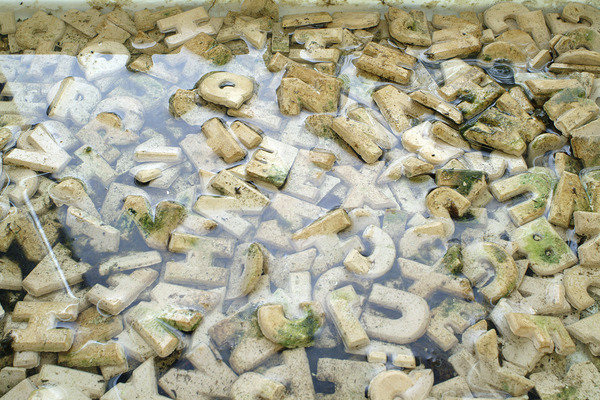Lois Weinberger
dal 18/3/2015 al 5/9/2015
Segnalato da
18/3/2015
Lois Weinberger
Kunsthalle Mainz, Mainz
Sculptures, photographs, drawings, models and notes. A crucial element of Weinberger's work is his external perspective, which is informed by his affinity to wild plants that quickly grow on disturbed or abandoned plots of land.

The Kunsthalle Mainz is pleased to announce a solo exhibition of sculptures, photographs, drawings, models and notes by Lois Weinberger. Born in Tyrol in 1947, Lois Weinberger is an unusual artist in many different ways. Despite his considerable success such as exhibiting at documenta X and the Venice Biennale in 2009, he remains true to his role as an outsider in the art business – as someone who does not assimilate the usual conditions, but instead chooses his own path.
A crucial element of Weinberger’s work is his external perspective, which is informed by his affinity to wild plants that quickly grow on disturbed or abandoned plots of land and his close relationship with nature. This is not to be understood as escaping from civilization but instead as a critical way of
encountering it. At the same time, Weinberger’s work also explores the meaning of concepts such as nature, culture, order or chaos. This point of view becomes particularly clear in his Wild Cubes: steel cages with which he locks nothing in but instead locks humanity out. Weinberger gives wilderness space; he breaks free of urbanity and questions the ubiquitous striving for complete control. The concept of nature does not necessarily have to be the opposite of culture; Weinberger shows us where nature and culture come into contact but also shows the boundaries between these two concepts.
Although at first glance specific materials and localities appear to be in the foreground in Weinberger’s works, they can also be looked at as ecological and social metaphors. While artistic creation is traditionally given a place of honor, Weinberger assigns importance to uncontrolled growth. His method of work is thus systematically different from that found in conventional artistic production. He does not create paintings or sculptures; instead he creates spaces which can develop on their own, or exhibits documentations of real-world situations which confront the beholder with fundamental political and philosophical questions.
In other projects, Weinberger strips away parts of asphalt--covered surfaces and fences off these areas so plants can grow without constraint; or he plants plant seeds imported from southern Europe on a railway in Kassel which, as foreign objects within the architecture and local vegetation, can be viewed as a graphic parable of migration.
From a historical perspective, the museum – and also the artist’s workshop – function as a protected space in which the representation of the world can be negotiated from a safe distance. However, Weinberger’s work follows other rules. He steps directly into the outside world and brings the uncontrolled into the exhibition, in order to debunk and counteract the exaggerated total shaping of the world. He impressively counters the general fear of losing control with the diversity and freedom of wild growth.
When artists occupy themselves with nature, their approach is often similar to that of gardeners who only wish to landscape and shape the appearance of gardens. Weinberger on the other hand understands that the real garden is in the soil. He turns away from the old concept of hortus conclusus (the enclosed garden) where controlling natural growth is the focal point. Instead, he searches out industrial wasteland where plants can flourish which are very different from those in an immaculately kept front yard. Weinberger finds the true other garden in the earth and in growth itself. His works show us that we – also metaphorically – overlook the essential, the real riches by only paying attention to flowers, agricultural crops and decorative plants.
Image: Garten, 1991, Lehmbuchstaben gebrannt, Privatsammlung Wien. Foto: Dirk Pauwel. Courtesy the artist
Exhibition opening: Thursday, March 19, 2015, 7:00 pm
Kunsthalle Mainz
Am Zollhafen 3–5 55118 Mainz Germany
Hours:
Tuesday, Thursday, Friday 10 am to 6 pm
Wednesday 10 am to 9 pm
Saturday and Sunday 11 am to 6 pm
Public Holidays 11 am to 6 pm
Monday closed
Entrance fees:
Adults 5 €
Discounted price for pupils, students, OAPs, severely disabled persons 2 €
Groups of 10 adults upwards (per person) 3.50 €
Groups of 10 upwards reduced (per person) 1.50 €
Children up to 6 years free admission
Annual season ticket 25 €



